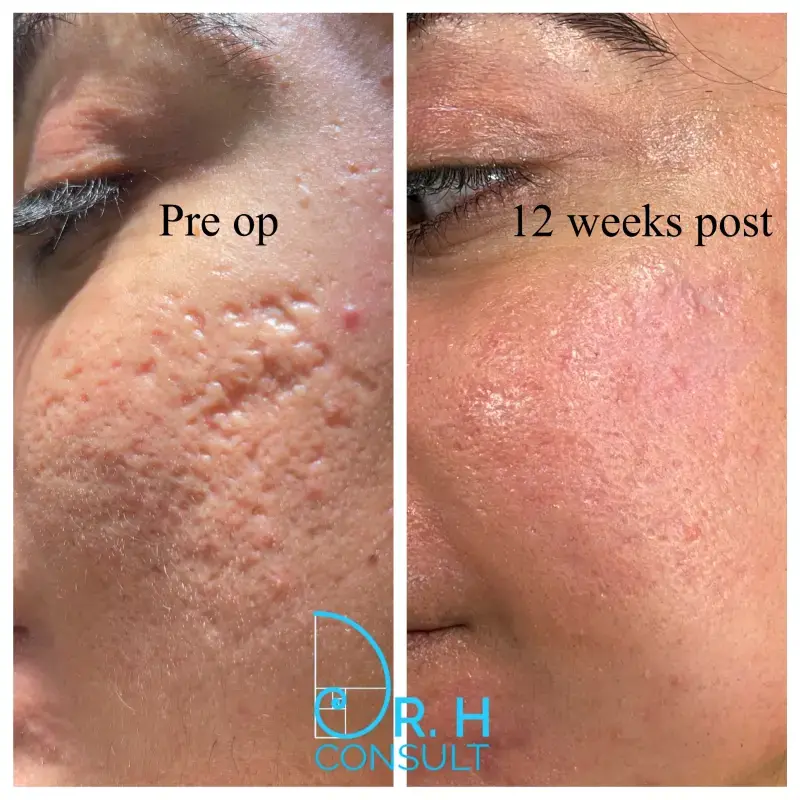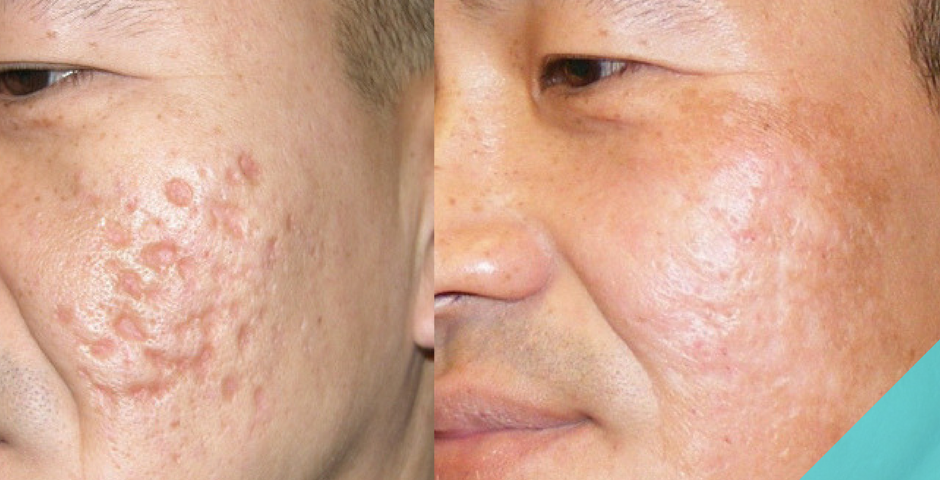Advanced Acne and Acne Scars Treatment: Say Goodbye to Acnes
Advanced Acne and Acne Scars Treatment: Say Goodbye to Acnes
Blog Article
Checking Out Skin Conditions: Treating and identifying Acne Scars for Healthier Skin
Acne marks represent a considerable concern for individuals seeking to keep healthy and balanced skin, as they can impact both appearance and self-esteem. Recognizing the different kinds of marks, from atrophic to hypertrophic, is essential for determining ideal treatment options. While specialist interventions like chemical peels and microneedling can be effective, the relevance of customized care strategies can not be overstated. Preventative procedures play an essential duty in reducing future scarring. As we discover these aspects, one must think about how the ideal method can bring about transformative results.
Recognizing Acne Marks
Understanding acne marks is crucial for any individual that has experienced serious acne, as these marks can have a long-term impact on both physical appearance and mental health. Acne marks create when the skin undergoes inflammatory reactions during active acne lesions. The seriousness of scarring is usually influenced by elements such as the kind of acne, its period, and specific skin attributes.
The body's all-natural healing procedure can cause either atrophic scars, which appear as clinical depressions in the skin, or hypertrophic scars, which are increased and result from overflow of collagen. Additionally, the psychological toll of acne scars ought to not be underestimated; numerous people report feelings of shame, anxiety, and reduced self-confidence. This emotional concern can influence social interactions and general high quality of life.
Resolving acne marks requires a comprehensive understanding of their formation and influence. Awareness of the possibility for long-lasting repercussions connected with neglected scars can motivate people to seek suitable therapies. Early treatment and efficient administration methods can dramatically enhance skin appearance and improve psychological resilience, stressing the significance of understanding the complexities surrounding acne scars.
Sorts Of Acne Marks
Acne marks can be classified into distinct kinds, each exhibiting unique features and needing particular treatment strategies. The key kinds of acne scars consist of atrophic, hypertrophic, and keloid scars.

Hypertrophic marks, on the other hand, are increased above the skin degree and are the outcome of too much collagen production throughout the recovery procedure. They generally continue to be within the boundaries of the original acne sore. Keloid marks are similar but extend beyond the initial injury site, forming larger, elevated areas that can be excruciating or scratchy.
Understanding these kinds of scars is important for selecting proper therapy options. Different marks might respond much better to certain therapies, such as laser therapies, fillers, or medical interventions, highlighting the importance of a tailored technique to acne scar monitoring.
Recognizing Your Marks
Acne marks normally fall into 2 groups: hypertrophic and atrophic scars. These can even more be classified into ice-pick marks, boxcar marks, and rolling marks, each exhibiting distinctive features and requiring various approaches for evaluation visit the website - skin rejuvenation treatments.
Hypertrophic scars, on the various other hand, are elevated and happen due to extreme collagen production during the healing procedure. Recognizing the particular features of your scars-- such as texture, width, and depth-- is essential for appropriate recognition. Furthermore, take into consideration the distribution of marks throughout your skin, as this can indicate the intensity and duration of the acne condition.
Involving with a dermatologist can supply valuable insights right into the nature of your marks, assisting in the differentiation in between numerous types. A complete understanding of your marks will ultimately cause a more tailored and efficient therapy strategy, ensuring a clearer and healthier skin.
Therapy Options Offered
Recognizing the specific sort of acne scars existing on your skin prepares for exploring efficient therapy options. Typical types of acne scars consist of atrophic (depressed), hypertrophic (elevated), and post-inflammatory erythema.
For atrophic marks, choices such as chemical peels, microneedling, and laser resurfacing are extensively utilized. Chemical peels utilize acids to remove the external layer of skin, promoting brand-new cell development. Microneedling includes little needles that produce micro-injuries, stimulating collagen manufacturing. Laser resurfacing targets harmed skin cells, boosting structure and tone.
Hypertrophic scars can be treated with corticosteroid injections to flatten the scar or laser therapy to reduce inflammation and improve look. acne scars. Silicone gel sheets and stress dressings may likewise help in managing raised marks
On top of that, dermal fillers can briefly complete clinical depressions from atrophic marks, while medical excision might be ideal for extreme cases. Each treatment alternative has its advantages and factors to consider, making it necessary to talk to a skin doctor. They can supply customized referrals based upon the type you could try these out and intensity of your scars, as well as your skin kind and general health and wellness.
Tips for Prevention
Efficient avoidance methods can considerably reduce the chance of creating acne marks. The initial step is to keep a regular skin care routine that consists of mild cleaning, peeling, and moisturizing. Making use of non-comedogenic products assists protect against clogged up pores, which can aggravate acne. Furthermore, integrating topical treatments containing salicylic acid or benzoyl peroxide can effectively reduce and manage breakouts inflammation.
Preventing need to stand out or select acne lesions is vital, as this can cause deeper skin damage and increase the threat of scarring. Rather, take into consideration utilizing a chilly compress or over-the-counter treatments to decrease swelling and inflammation.
Sunlight protection is one more important aspect of avoidance; ultraviolet (UV) rays can dim scars and prevent the healing process. Applying a broad-spectrum sunscreen with at least SPF 30 daily can secure the skin and promote also healing.
Lastly, preserving a well balanced diet rich in antioxidants, minerals, and vitamins supports skin wellness and recovery. Staying hydrated and managing anxiety degrees can additionally play a significant role in reducing acne flare-ups. By executing these methods, people can significantly lessen their opportunities of creating acne marks.

Verdict
Finally, understanding and recognizing acne marks is essential for effective treatment and achieving healthier skin. Numerous sorts of acne marks, including atrophic and hypertrophic scars, demand details treatments customized to individual requirements. Treatment alternatives range from chemical peels and microneedling to corticosteroid injections, stressing the importance of speaking with a skin doctor. Additionally, taking on a mild skin care routine and securing the skin from UV direct exposure can significantly contribute to the prevention of additional scarring and general skin health.
The body's all-natural healing process can result in either atrophic scars, which appear as depressions in the skin, or hypertrophic marks, which are increased and result from overflow look at here now of collagen. They are more divided into three subtypes: ice choice scars, boxcar scars, and rolling scars. Acne scars typically fall into 2 classifications: atrophic and hypertrophic marks. These can additionally be categorized into ice-pick scars, boxcar scars, and rolling scars, each showing distinct attributes and requiring different approaches for analysis.
Numerous kinds of acne marks, consisting of hypertrophic and atrophic scars, require particular treatments customized to specific requirements.
Report this page